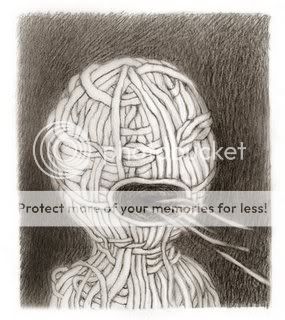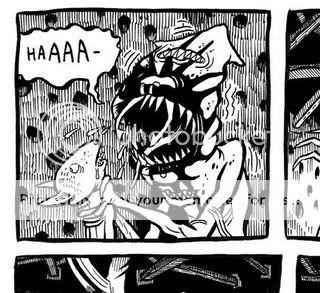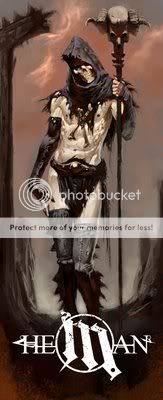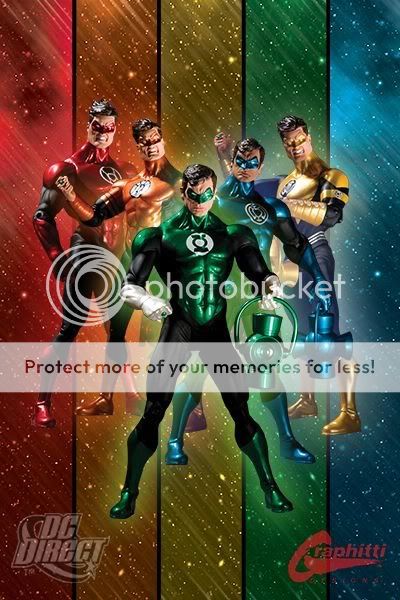I’m gonna be in town and I was hoping someone could recommend something to do. I understand they have a very nice zoo.
OH MY GOD
CLIVE BARKER will hold a brief conversation with GRANT MORRISON before the signing.
WHO: GRANT MORRISON
WHY: Signing Batman and Robin and his latest Hard Cover Book
WHEN: WEDNESDAY, JULY 1st, 2009
MUSIC PROVIDED BY: iheartcomix.com & DJ Franki Chan
DRINKS: ASAHI & TIBETAN TEA
6:00 PM to 9:00 PM @ MELTDOWN
7522 SUNSET BLVD, L.A., CA, 90046
(hat tip: David Paggi
Carnival of souls
* It’s come at last, at last it’s come, the day I knew would come at last has come at last: Topless Robot’s Rob Bricken reviews Transformers 2, first in traditional prose fashion and again in handy Frequently Asked Questions form. Childhood-raping accusations are kept to an absolute minimum (logic-raping accusations, not so much), plot holes that make Terminator Salvation sound like Chinatown by comparison are delineated in loving detail, and the comment threads offer all the lulz you’d expect, from labeling the reviews “hate-filled” “propaganda” to calling people who found Michael Bay’s racist-caricature robots racist racist themselves to anonymously suggesting everyone go out and get laid instead of complaining. It’s magnificent.
* Ta-Nehisi Coates talks about Michael Jackson, separating art from artists, and Jeffrey Dahmer.
* Renee French’s art is unnerving.
Full of secrets
I’ll Be There in Twin Peaks from Mashed in Plastic on Vimeo.
Michael Jackson and Twin Peaks fans, prepare to get knocked flat on your ass.
Carnival of souls: Special “no mere mortal can resist” edition
* Michael Jackson is dead. I’ve been so busy today I’ve barely had time to process it, but is there any way to overstate the depth of the man’s genius and the tragedy of his decades-long demise? Just the other day I was watching the footage of the Motown anniversary concert where he debuted the moonwalk, and I got to thinking about how while it’s easy for people my age who’ve watched him and parodies of him all our lives to take for granted, this stuff didn’t come out of nowhere–this guy had to think all those moves up and then have the physical talent to do them. And that’s quite aside from his world-beating songwriting and singing gifts, and his ability to comport himself as probably the closest thing the world has actually produced to a Ziggy Stardust rock and roll messiah, and the fact that he accidentally became one of the most important figures in horror history, and on and on and on…and whatever the truth of his dealings with children, which I think were disturbing even in the best-case scenario, it’s also impossible to separate that, and him, from what was likely horrendous abuse at the hands of his loathsome father…and of course there’s no inherent reason that he couldn’t have kept producing worthwhile music for years to come if he could have mastered whatever it was that was so visibly tearing him apart….and, and, and. God, just such a complex, astonishing, tragic figure. Fuck, okay, now I’m getting upset about it. I loved you Michael Jackson.
* Coincidentally, Ta-Nehisi Coates, a blogger who’s getting so good I was already going to link to him today simply to say “Ta-Nehisi Coates is a really, really good blogger,” wrote two pieces on Michael just a couple of days ago that you should read. Andrew Sullivan’s post is just beautiful, too.
* While we’re at it, I’m still pretty proud of the essay I wrote about the influence of “Thriller.”
* Well this has got to be my favorite review of the month: Not Coming to a Theater Near You’s Adam Balz tackles The Running Man with an utterly straight face (“Richards is brought on stage, introduced to the live audience against a thunder of jeering – he is, after all, the Butcher of Bakersfield, a lie that is reinforced through doctored video of him firing on the unarmed crowd – and set down in a metal cart that will deliver him, at an unimaginable velocity, through underground tunnels, into the massive, 400-square-foot arena.”). I have seen The Running Man more than any other of the ’80s’ many ultraviolent sci-fi action movies, largely because it was the one I watched as a kid. Heck, it was all but designed for a kid, modeled as it was on the visual language of pro-wrestling–but with killing! So this review really has it all for me. There’s a list of the varied career paths of the many, many non-actors who star in the film (Family Feud host, titular member of Fleetwood Mac, son of Frank Zappa, future governor (twice!), football/lacrosse legend, etc etc etc), a tidbit about Stephen King/Richard Bachmann’s writing process, a leisurely stroll through a couple of the movie’s adorably gigantic plot holes, a Slavoj Zizek reference, a comparison to Charlie Chaplin’s The Great Dictator, you name it. If any of that sounds appealing to you, please read it.
* Now, if you’d told me earlier that I’d find a review today that I’d actually like better than Jog’s take on Greg Rucka & J.H. Williams III’s Detective Comics debut, I wouldn’t have believed you. Funny world, innit? Still, this thing’s very good–better than the comic, I think. (Did anyone else think it was funny that between the main Backup story and the Question backup story, there were two virtually identical scenes of a lesbian crimefighter in her civvies walking into a room and chatting with her late-middle-aged sidekick as he works on the computer?)
* Over the past few years Fantagraphics has truly brought out the format geek in me; I think it was their amazing softcover digest-plus re-release of Love & Rockets that did it, but the design and format of their Jason books has been killer too. So it’s fascinating to me that they’re repackaging Jason’s black-and-white/two-color books (some for the third time!) in the hardcover format they did for Low Moon. I’m actually not 100% sure how I feel about this–part of the appeal of Jason’s stuff is just how damn many books he’s put out through Fanta and just how awesome all of them are, and when you boil them down to three or four volumes you lose that impact a bit–but I’m sure they’ll be gorgeous things, and of course the comics are among the best in the world.
* While promoting that longer-but-still-not-complete Watchmen Director’s Cut that will inevitably be supplanted by the actual full-fledged Director’s Cut that he’d been describing to anyone who’d listen for months before the release of the film, director Zack Snyder said that Frank Miller really is writing a sequel to 300. Fingers crossed!
* To distract its citizens from the ongoing protests, Iran is broadcasting…The Lord of the Rings?
* Topless Robot. Transformers 2. The magic happens tonight.
Carnival of souls
* There just wasn’t much to talk about over the past few days! Please note that if you ever miss me around here, you can probably get a temporary fix by following @theseantcollins on Twitter.
* Last weekend, I think, MTV2 was doing this weird thing where they’d just show a hodgepodge of stuff MTV used to air during the ’90s–sketches from The State, Beavis & Butt-Head segments, the original silent and awesome Aeon Flux episodes, actual music videos, etc. Among this melange I caught the opening installment of the in-retrospect outrageously faithful animated adaptation of Sam Kieth and Bill Messner-Loebs’s The Maxx, and wow, that thing held up. Now it turns out MTV is streaming episodes at its website. (Via JK Parkin.) The Maxx was really my gateway to alternative comics in a lot of ways–visually and eventually thematically it threw open some doors in my head that I walked through years later–and I know a lot of folks my age have a similar story.
* Frank Santoro Will Teach You To Make Comics!
* Anders Nilsen has been posting sketchbook comics like crazy lately; here’s the latest. They’re a little cutesier and sillier than usual.
* Behind-the-Curve Comics Theater: CF’s “Vollenweider’s Cave,” via everyone last week. Note the uncredited cameo by the Toxic Avenger, or his face at least.
* Just the other day I was talking with my brother, who was freshly returned from proposing to his girlfriend at Disney World, about what a kickass theme park ride Lost would make. I must have been tapping the zeitgeist, because lo and behold, a rumor to that effect was recently debunked. Too bad!
* Holy moley, this gallery of 200 Dick Tracy characters is impressive. (Via Tom Spurgeon.)
* Hey, look, it’s Nick Bertozzi! (Also via Spurge but I can’t get the link to work)
* While the Loch Ness Monster will always hold a special place in my heart, and while I love giant squids to pieces too, I think the cryptid that really fires my imagination most is the mokele mbembe, the sauropod dinosaurs that supposedly still lurk in isolated jungles in central Africa. But what if the mokele mbembe isn’t a dinosaur at all? The extinct rhinoceros relative Indricotherium would match the long-necked descriptions offered by eyewitnesses and local legend; its former habitat would map pretty neatly to the contemporary African jungles; and obviously it’s a bit easier to imagine a surviving pocket of slightly prehistoric mammals than it is to imagine a bunch of dinosaurs running around millions of years after the fact. Finally, HOLY CRAP LOOK AT THIS AWESOME PICTURE
Carnival of souls
* I Deserved That Part 1: CRwM makes Swiss cheese out of my ill-supported contention yesterday that extreme, difficult violence in various horror movies can be labeled good or bad, worthwhile or pointless, based on the artists’ intent. All I can say is mea culpa. I shouldn’t have said “intent.” I didn’t even really mean “intent,” I don’t guess–I certainly wasn’t sitting there mentally comparing, say, what the makers of Inside must have been thinking to what the makers of Henry must have been thinking. I was inferring motivation, which was my mistake, but what I was really thinking of was “effect.” I’m glad CRwM called me on this.
* I Deserved That Part 2: Tom Spurgeon says “Where’s your god now, Moses?” to those of us who defended Final Crisis #1’s chart placement behind Secret Invasion #2. I don’t see the connection he’s trying to make between the commentariat’s take on its performance and that of the dire May 2009 sales chart–no, we’re not defending the relative health of the top books this month, but that’s because they aren’t healthy. Still, in retrospect, defending the failure of the first issue of an event comic by top talent from a Big Two publisher to hit #1 in a marketplace designed specifically to get first issues, event comics, and top talent from Big Two publishers to #1 does seem like so much weaksauce. I think maybe Grant Morrison is telling a story between the lines when, in interviews, he proudly and correctly points out that Final Crisis and Batman R.I.P. were the bestselling books of the year for DC. (Pick the phrase to emphasize in that sentence.) Whatever, they’re still awesome comics and I’m still twelve kinds of skeeved out by the idea that I should think of them as artistic failures because they didn’t do Civil War numbers.
* Behold, The Immortal Iron Fist is becoming, at least for five issues, Immortal Weapons, and you can see a sketchbook preview here. The recently revived and expanded Iron Fist mythology is sort of the foundational text for a quartet of rewardingly outside-the-usual-territory Marvel books that includes The Incredible Hercules, Agents of Atlas, and the unfortunately cancelled, possibly-to-be-revived-digitally Captain Britain and MI-13. I hope Immortal Weapons is good and does well.
* Speaking of the debt we owe to Ed Brubaker these days, my goodness the upcoming Criminal: The Deluxe Edition is an eye-catching object.
* Well, here’s a swell idea for a regular column: The AV Club presents Gateways to Geekery, a guide to the kinds of things you hear great things about but seem too daunting to dive right into. This go-round, Tasha Robinson recommends Stephen King gateway texts. I pretty much agree with all her recommendations: Where to start, must-reads for the newly broken-in, and books you should probably stay the fuck away from. (Hello, Dark Tower series!) (Via Whitney Matheson.)
* I know it’s a cash grab by Capitol Records, but these double- and triple-disc reissues of Radiohead’s back catalog–soon to include Kid A, Amnesiac, and Hail to the Thief–really scratch an itch I’ve had for over a decade. I remember enviously eyeing that Japanese import EP with “Killer Cars” on it at the campus record store for ages but never quite having the guts to spend the cash on it, and now all I have to come up with is around $10 when these every-B-side-remix-and-live-version collections hit the Amazon used listings and I’m good to go!
* There’s really nothing about the idea of Beck doing a quick-and-dirty cover of the entirety of The Velvet Underground and Nico and releasing it online song by song that I don’t like. Ditto the runner-up album for the honor, the Digital Underground’s Sex Packets (which I was just listening to on Wednesday!).
@altcomix
Below is a list of alternative comics creators and publishers on Twitter. I can’t say it’s comprehensive–this was just me grabbing the people I follow, and the people they follow, and so on until I got sick of it, so there’s certainly people I missed–but it’s a start. I also can’t say that all of the below fit the dictionary definition of alternative cartoonists, but better too many than too few, right?
Aaron Diaz @dresdencodak
Act-I-Vate @act_i_vate
Alison Bechdel @abechdel
Andy Runton @owly
Becky Cloonan @beckycloonan
Billy Mavreas @billy_mavreas
Box Brown @boxbrown
Brett Warnock (Top Shelf) @brettwarnock
Bryan Lee O’Malley @radiomaru
Cameron Stewart @cameronstewart
Chip Zdarsky @zdarsky
Chris Onstad @achewood
Chris Radtke @radtke327
Chris Staros (Top Shelf) @chrisstaros
Chuck BB @chuckbb
Colleen Coover @colleencoover
Corey Lewis @kenby
Dan Goldman @dddangoldmannn
Dan Nadel (PictureBox) @dannadel
Danny Hellman @dannyhellman
David Heatley @heatley
David Lasky @davidlasky
David Malki @malki
Dean Haspiel @deanhaspiel
Drawn & Quarterly @dandq
Dustin Harbin @dustinharbin
Dylan Horrocks @dylanhorrocks
Elijah J. Brubaker @elijahbrubaker
Evan Dorkin @evandorkin
Faith Erin Hicks @smuu
Fantagraphics @fantagraphics
Graham Annable @grickle
Icecreamlandia @icecreamlandia
James Jean @processrecess
James Lucas Jones (Oni) @jameslucasjones
Jason Little @beecomix
Jen Sorensen @slowpokejen
Joe Chiappetta @joeychips
John Leavitt @leavittalone
Jon Vermilyea @jonvermilyea
Karl Kerschl @karlkerschl
Kate Beaton @beatonna
Kaz @kazunderworld
Laurenn McCubbin @laurennmcc
Leigh Walton (Top Shelf) @leighwalton
Lloyd Dangle @lloyddangle
Lucy Knisley @lucylou
Matt Forsythe @mattforsythe
Matt Madden @mmaddencomics
Matt Maxwell @highway_62
Michael Kupperman @mkupperman
Mike Dawson @mikedawsoncomic
Molly Crabapple @mollycrabapple
NBM @nbmpub
Neil Jam @neiljam
Neil Kleid @neilkleid
Oni Press @onipress
Pantheon Books @pantheonbooks
Paul Hornschemeier @forlornfunnies
Paul Pope @pulphope
R. Stevens @rstevens
Renee French @reneefrench
Rick Spears @rickspears
Rick Trembles @ricktrembles
Rob Vollmar @robvollmar
Salgood Sam @salgood
Sarah Dyer @colorkitten
Sarah Glidden @kidglidden
Scott Campbell @scottlava
Scott McCloud @scottmccloud
Terry Moore @terrymoore
Tim Hodler (PictureBox) @thodler
Tom Tomorrow @tomtomorrow
Vasilis Lolos @vasilislolos
Warren Craghead @wcraghead
Zack Soto @secretvoice
I got a right to be Hostel
Continuing his series of posts on torture porn, Curt Purcell reviews Hostel, which he likes less than I did, and Hostel Part II, which he likes more than I did. That’s about what I expected.
For the record, I thought the thriller component of the first film was enormously effective–my pulse was pounding!–in no small part because of the smart acting choices made by Jay Hernandez and, I suppose, by Eli Roth’s direction of him.
Also for the record, contra Curt’s interpretation of my Hostel Part II review, I didn’t have “apparently visceral discomfort with what [I] call ‘the aestheticized abuse of women” in the Heather Matarazzo torture scene qua the aestheticized abuse of women. Granted, that’s not necessarily my thing the way it is for much of the material Curt’s Groovy Age site focuses on, but I have no problem with it in theory any more than I have an inherent problem with the aestheticized abuse of any character in a horror movie. Moreover, I’m guessing Curt took my comment that I found the Weiner Dog Bloodbath scene to be one of the most unpleasant I’ve ever seen to mean that I didn’t “enjoy” seeing it. Enjoyment’s a tough nut to crack with horror, but again, and much more so than with Curt, “unpleasant” is more or less what I’m looking for with horror!
So if neither of those points is the key, what is? It lies in this quote from Curt:
In a movie that carves out its own signature fantasy space with a distinctive hyper-realistic style, the bloodbath scene sticks out like a sore thumb with its sumptuous, soft-lit gothicisms. It’s mentioned several times in the commentaries that this scene was actually quite disturbing to people on set during filming, and that’s less surprising to me than Sean’s reaction, because they were seeing it without all the framing, styling, cuts, editing, and post-production that so insistently reassure, “It’s only a movie.”
It was precisely because it had all that “it’s only a movie” nonsense surrounding it–and I’m thinking less of the Euro-horror sensuality in the scene itself, which is fine, and more of the splatstick stuff in the climax, which undercuts the whole film–that it bothered me so much. It’s kind of like the bit in Inside that made me turn off the movie. If I’d been watching Henry or Dahmer or The Texas Chain Saw Massacre or something similarly weighty and serious in intent, I’d have stuck with it, but to violate that particular taboo in the name of a slick, glossy (if gory), credulity-stretching thriller? Thanks but no thanks. Ditto the demise of Weiner Dog. Paradoxically, it’s precisely the lack of realism that makes these sequences tougher both to watch and to justify. If i’m going to watch a nude woman get tortured to death, I want to feel like I’m eating my vegetables, not Cookie Crisps.
Carnival of souls
* While I’m busy touting my Marvel clout, I’m reasonably sure it was a suggestion I made among a group of my friends that led to my pal Kiel Phegley asking whether Paul Cornell & Leonard Kirk’s late, lamented Captain Britain & MI-13 might be brought back as a digital comic, and Joe Quesada responding favorably, in the latest Cup o’ Joe column at CBR. If you like this idea, why not say so in public, and to any of your friends or acquaintances in Marvel’s employ? It sounds like if we ask for it, they’ll listen.
* That Cup o’ Joe interview also makes it sound like Marvel is out of the line-wide event business, or will be after maybe one more trip to the well. I think that’s good for the long-term health of the superhero comics industry, but May’s ginormous sales dip likely indicates it’ll be a challenge in the short term. I suppose it depends in part on whether, like Marvel over the past couple years, you try really hard to keep all your plates spinning, or whether you can only spotlight one or two franchises at a time to the detriment of the others.
* James Robinson and Mark Bagley on Justice League of America? Sure, I’ll eat it. I don’t have the experience with Robinson that many superhero readers do, having never read Starman, but while I didn’t end up liking his One Year Later Batman arc I’ve enjoyed his work in the Superman books recently quite a bit. Bagley, meanwhile, is not my favorite artist when it comes to drawing DC characters, but he knows how to tell a story and his work on Ultimate Spider-Man remains a woefully underappreciated component of that title’s success. I remain concerned about DC putting the cart before the horse by preventing its flagship team title from including its biggest characters because they’re busy elsewhere–there’s a reason Grant Morrison’s JLA and Brian Bendis’s Avengers were/are the biggest books of their eras, and it’s not because they focused on Vixen or Jack of Hearts–but still, color me intrigued. (Via JK Parkin.)
* Now this is how you write a post-artcomix-festival thank-you letter: TCAF’s Chris Butcher shows us how it’s done.
* The Simpsons Treehouse of Horror 2009—aka Kramers Ergot 7.5–will be guest-edited by Sammy Harkham. That line-up is effing nuts.
* It wasn’t until Heidi MacDonald used the word “remote” to describe the old location of the Eisner Awards that I realized, hey, wait, yeah, that is kinda weird, isn’t it? All the way at the end of the convention center by itself after the show shuts down for the evening, and you’ve got to walk under the sails through that deserted stretch of swag tables and autograph aisles. Anyway it’s moving to the Hilton.
* Because the original Red Dawn is a) a gonzo artifact of its time; b) a John Milius fever dream; c) TOTALLY AWESOME, I’m not sure I’ve said word one about Their plans to remake the movie, because why bother? But Latino Review is reporting that Tony Gilroy, Oscar-nominated writer/director of Michael Clayton and screenwriter of, I think, the last two Bourne movies is writing the Red Dawn remake. Suddenly this project got a lot more interesting. Incidentally, Red Dawn has recently joined Atlas Shrugged as a key text for the Obama era in the minds of some prominent and semi-prominent conservatives, so it should be interesting to see how they react to the prospect of the film being remade by the pen of a writer whose thrillers are generally perceived to tilt left.
* That Red Dawn link was via SciFi Wire, but I’m not linking to them again until they knock off their obnoxious habit of putting spoilers in their article headlines, above the by-now-pointless “spoiler warning” tag.
* B-Sol reviews The Blob. That scene where it eats the old man’s hand really was horrifying to watch as a kid, wasn’t it?
* These are two years old at least, but no less awesome for that: Marvel go-to cover artist Marko Djurdjevic redesigns He-Man and the Masters of the Universe. Dig this Marilyn Manson-esque Skeletor! But the Mer-Man is more representative of what the redesigns look like overall. (Via Monster Brains.)
* I have no idea what the deal is with this photo from Rob Zombie’s upcoming Halloween 2, and I’m unlikely ever to find out first-hand, but damn what a great character design. It’s almost criminal to consign it to some other monster’s movie. (Via Arrow in the Head.)
* Finally, my pal Chris Ward talks to Jazma Online about Political Power: Barack Obama, his upcoming comic from Bluewater (yes, the “Female Force” people–Chris wrote the Condoleezza Rice issue). I’m trying to think how to put this…Chris is an interesting choice to write this project, or to write anything that you don’t want to read like the work of a crazy person, which is what Chris is. I think the interview speaks for itself. And it also has some juicy tidbits about life at Wizard.
Carnival of souls: special “Sean Nerd Crack” edition
* I have a Twitter now. I’m @theseantcollins. I hope you like Primus lyrics, because that’s what you’re getting.
* As mentioned earlier, I’ve also created Fuck Yeah, T-Shirts, a new tumblelog dedicated to pictures of people wearing t-shirts I like. I’m pleased to welcome my friend and Twitter deity Ryan Penagos aboard as my partner in this venture. We’re off to a good start:
* Sean Nerd Crack Part 1: Tim O’Neil discusses the career of David Bowie in terms of Batman. This post is one Hellraiser reference away from making my face fall off.
* Sean Nerd Crack Part 2: Curt Purcell discusses torture porn, also in terms of Batman–Knightfall, to be specific. It was at this point that I wondered if I’d actually woken up this morning. Best of all, like Tim’s Bowie/Batman post, this is just the first in a series.
* Sean Nerd Crack Part 3: Taste the rainbow of San Diego Comic Con-exclusive Green Lantern action figures!
* Sean Nerd Crack Part 4: I can’t imagine actually spending my and my wife’s collective hard-earned money on a G.I. Joe: The Complete Series box set, but I sure can imagine staring at this picture of it for hours at a time. This is like the nerd answer to that Fort Thunder collection I linked to yesterday.
* Sean Nerd Crack Part 5: China Mieville defends J.R.R. Tolkien and holy shit this part reads like I wrote it myself seriously I raised my hands up and cheered:
In his abjuring of allegory, Tolkien refuses the notion that a work of fiction is, in some reductive way, primarily, solely, or really ‘about’ something else, narrowly and precisely. That the work of the reader is one of code-breaking, that if we find the right key we can perform a hermeneutic algorithm and ‘solve’ the book. Tolkien knows that that makes for both clumsy fiction and clunky code.
YES YES YES YES YES YES YES YES YES
And in his five-point defense of the entirety of Tolkien’s work, one entry is “The Watcher in the Water.” I mean, seriously, am I in some kind of psychogenic fugue? (Via The One Ring.)
* Back on the Batman beat, The Mindless Ones’ The Beast Must Die talks about Morrison & Quitely’s Batman & Robin #1 in terms of all the things that have defined his involvement with Batman over the years: the Adam West TV show and its theme song, Tim Burton’s first blockbuster Batman film and its t-shirts and Prince soundtrack and Danny Elfman score, Frank Miller’s ever-evolving Bat-mythology from The Dark Knight Returns to the years-ahead-of-its-time The Dark Knight Strikes Again to All Star Batman & Robin, the Boy Wonder…it doesn’t quite track my own involvement with Batman in every particular (I didn’t read comics as a kid, I wasn’t into Batman before the movie), but it’s close enough to give me chills.
* There’s a really robust discussion of the role of the divine in Battlestar Galactica, and the role that role played in the reception of the series’ conclusion, going on in the comment thread downblog.
* Geoff Grogan announces he’s secured a grant to produce Look Out! Monsters #2! Though it probably won’t be called that. LO!M #1 was a terrific book.
* Elsewhere, and I missed this somehow when it went up back in March, Geoff pans BJ and Frank Santoro’s Cold Heat–a rare reaction indeed, and he pulls no punches.
* Speaking of the PictureBox gang and pulling no punches, I also somehow missed this comment-thread roundelay about artists/critics reviewing works with which their own work may compete, featuring such luminaries as Gary Groth (!), Dan Nadel, Tom Spurgeon, Tim Hodler, Jeet Heer, and Rob Clough. The nice thing about the debate is that there are plenty of clear examples and apples-to-apples comparisons cited for us to work with. Should Dan Nadel review Craig Yoe’s Boody Rogers anthology, given that Dan has himself anthologized Boody Rogers? Should Gary Groth review Denis Kitchen’s R. Crumb publications, given that Gary has himself published R. Crumb? Should Tom Spurgeon review Mark Evanier’s Jack Kirby book, given that Tom is himself working on a Jack Kirby project? Should Tom critique comics news blogs Bleeding Cool or Journalista, given that Tom is himself a publisher of a comics news blog?
I understand where Tom is coming from here–there’s something potentially icky about this idea. (Icky and yucky are perfectly acceptable words for grown-ups to use, Gary!) But the key there is “potentially.” As long as the context is proffered, who ultimately cares? I don’t see why the situations above, or comparable ones, rule out criticism in a way that being socially friendly with the creators or publishers involved doesn’t, or having worked with them or for them doesn’t, and on and on and on. Granted, I sort of have a dog in this race: In the past year, and in some cases on an ongoing basis, I have written for DC, Marvel, Wizard, Top Shelf, and Fantagraphics, as well as The Savage Critic(s), The Comics Reporter, and Comic Book Resources, not to mention The Onion and Maxim and wherever the hell else. I like to think that these facts shouldn’t preclude me from writing about the work produced by any of those outlets, as long as I’m up front about it, which, hey, look at that sidebar to your left. Then again I’m sure others totally disagree.
Moreover, I disagree with Tom insofar as I’m more interested in reading the criticism of a direct competitor, in some ways at least, than I am in reading the criticism of an uninvolved third party. Why wouldn’t I want to hear what new-media music pioneer Trent Reznor thinks about new-media music pioneer Radiohead’s new-media music pioneering? Or what Spirit comic-book guy Darwyn Cooke thinks about Spirit movie guy Frank Miller’s Spirit? Or what Boody Rogers expert Dan Nadel thinks about Boody Rogers expert Craig Yoe’s Boody Rogers anthology? Or what fantasy author China Mieville thinks about fantasy author J.R.R. Tolkien’s fantasy? Or what comics reporter Tom Spurgeon thinks about other people’s comics reporting? And on and on and on. It’s the commonality of interest, experience, and expertise that makes these perspectives valuable. Even if said commonality may cut off avenues of exploration that a disinterested observer may have access to, it surely must open up some others that such an observer doesn’t. Sure, there’s potentially an element of armchair-quarterbacking at least and score-settling/sour grapes at worst, but honestly, isn’t that part of the fun? We can take what they’re saying with the requisite grains of salt, as we should when we read any piece of criticism.
(Phew! Original link way back there somewhere via Chris Mautner.)
* David Lynch releasing a rock album recorded during the Fire Walk With Me soundtrack sessions? Sure, I’ll eat it.
* Here’s a 12-minute preview of Ron Moore’s new movie/series/whatever Fox wants it to be Virtuality. I haven’t watched it yet–I hope it’s good! (Via SciFi Wire.)
* Darkseid Minus New Gods. I threw my arms up and cheered for this, too. (Via Kevin Melrose.)
An announcement.
I have created a new Tumblr dedicated to pictures of people in T-shirts I like, titled Fuck Yeah, T-Shirts. I apologize for the “Fuck Yeah” meme component, but one must use the parlance of one’s times.
Carnival of souls
* What happens when a comics market designed to sell event comics fails to ship any event comics in the middle of a recession? That market tanks. Yikes. Congratulations to Top Shelf on bucking the trend with the new League of Extraordinary Gentlemen, though.
* My old Wizard chum Jim Gibbons interviews Ed Brubaker about Captain America #600 and Reborn. One of the interesting things about the Death and Rebirth of Captain America is that, as opposed to most big mainstream-friendly comics events, they’ve taken place as part of a long, high-quality run by a genuinely gifted writer. Unfortunately, there’s really no way to get that across in mainstream coverage, or even in coverage of that mainstream coverage.
* Wow, look at all those Fort Thunder comics! (Via Tom Devlin.)
* Curt Purcell is prepping for a big torture-porn post by watching the Hostel and Saw movies. YES.
* I fully support the official release of a studio version of Antony & the Johnsons’ stunning cover of Beyonce’s “Crazy in Love.”
* A documentary about a vineyard operated by the lead singer of Tool, featuring Tim and Eric? Sure, I’ll eat it. There’s certainly a lot to enjoy in this trailer, including but not limited to the following: Maynard James Keenan apparently preparing to give Evan Handler a run for his money in the casting process for the Lifetime Original movie Not Like This: The Brian Michael Bendis Story; Maynard rocking the vintage mid-to-late-’90s altrock fashion staple “logo T-shirt over long-sleeved shirt”; Maynard moving to the future eastern shore of Arizona Bay.
Carnival of souls
* I reviewed Jordan Crane’s Uptight #3–it’s right under this post.
* That’s Sir Christopher Lee to you, pal.
* When AdHouse’s Chris Pitzer posts his favorite MoCCA finds, you should probably pay attention. (More attention than I managed to pay at MoCCA, where I never even remembered to say hello to Chris! Hello, Chris!)
* Lots of good news on the “I hope you fail in your goal of making a terrible movie” front: Platinum Dunes is having trouble getting anywhere with their remake of The Birds and has abandoned the idea of remaking Rosemary’s Baby, while Marc Forster, director of the upcoming World War Z adaptation, says the J. Michael Straczynski-penned screenplay needs a lot of work. Who could have guessed???? (Via Bloody Disgusting.)
* Torture Links of the Day: Iranian protestors are subject to some of the same torture techniques that the U.S. has used on its detainees. Speaking of, the latest versions of statements from such detainees as Khalid Sheikh Muhammad and Abu Zubaydah regarding their torture have been released, albeit in highly redacted form. And finally, everything old is new again: Der Spiegel has a fascinating, horrifying article on a new book about torture methods in ancient times. “They shove a living snake up your ass!” “Ah, no…but that’s very creative.” (Via CRwM.)
Comics Time: Uptight #3
Uptight #3
Jordan Crane, writer/artist
Fantagraphics, May 2009
24 pages, including the covers which you should since they’re comics pages
$2.75
Without Jordan Crane’s The Last Lonely Saturday and NON #5 I wouldn’t have this blog–heck, I wouldn’t have this life, that’s how much of an influence those first tastes of the big wide world of alternative comics had on me. So it’s difficult to be objective when reviewing Crane’s new stuff. Fortunately it’s very very good so that’s not much of an issue. The long-awaited third issue of Crane’s Eightball-style one-man anthology series comes to us with a different cover and contents than we were originally promised–instead of a severed head, we get the kind of ingenue who used to grace NON‘s covers, her soul nude (aren’t they all?) and torn between heaven and hell (aren’t they all?). Instead of another installment of Crane’s loooooooooong-gestating serialized graphic novel of marriage and miscarriage, Keeping Two, we have the debut chapter of a new story, Vicissitude, which itself marks the debut of a new art style for crane: less of an emphasis on delicate, feathery, perfect line, oceans of gray, pointier noses. The plot is a bitter little thing, steeped in infidelity, alcohol, career dissatisfaction, hints of class self-consciousness, and frustration with the path your life has taken–like a Pulp song, almost. The visual shift to the second feature, a direct moments-later sequel to The Clouds Above, couldn’t be more dramatic–the grays disappear, the line transforms, the detail increases tenfold, and blam, we’re in Sam ‘n’ Jack’s world of buoyant, byzantine adventure. Crane’s Sam and Jack stories unfold like the pipes and vents upon which this tale centers: they bend and twist and wind in comically baroque ways, yet Crane’s control of his visuals and the story’s tone are so self-assured that it all seems completely logical, like a mind consciously built it this way and if you have a little faith, it’ll work like it’s supposed to.
The great crime of Uptight is that it barely ever comes out, and given the hostile climate for alternative comic book series these days, I’m not convinced that’s going to improve anytime soon. Best we can do is read the heck out of these bargain-priced gems anytime we get our hot little hands on ’em.
The News in Sean
I have a piece in the new issue of Maxim (the one with Olivia Wilde on the cover) about Final Crisis, featuring some quotes from Grant Morrison. Needless to say, getting Grant Morrison and Final Crisis into Maxim is one of my crowning achievements–though you should see the book I got into the next issue…
Carnival of souls
* Now it can be told: My pal Kiel Phegley will be co-hosting the weekly Joe Quesada interview series Cup o’ Joe with Jonah Weiland at Comic Book Resources from now on. I understand what the function of these kinds of Head Honcho Spotlight series is, but even still, Kiel’s a bright guy and I expect the intelligence and directness of the questions lobbed Joe Q.’s way to be considerable.
* Evan Dorkin points out some weirdness about MoCCA’s table-reservation process for 2010: Even though they haven’t announced a date for the show yet, you’re still not guaranteed a refund if you have to cancel your reservation. What the blood clot? (Via Tom Spurgeon.)
* The film adaptation of Clive Barker’s Book of Blood comes out on DVD on September 29th. I don’t know why I follow these things so closely when I still haven’t even fucking seen The Midnight Meat Train, but there you have it. (Via Shock Till You Drop.)
* I love this review of John Carpenter’s Escape from New York by Katherine Follett.
* Josh Simmons will draw your portrait! A bargain at any price.
Personal to Evan Dorkin
Okay, fine, “churlish” is a funny word. But if you take another look at my post both before and I dropped the c-bomb, you’ll see that your beef with the Armory’s appearance was the only place where I disagreed with what you were saying about MoCCA. Heck, in the immediately preceding sentence I talked about how useful your post in shutting down some silly defenses of the show’s lousy aspects this year, and how you’d pointed out problems I’d lazily taken for granted for so long that I’d never even bothered talking about them. Armory aesthetics aside, I’m on board with all your complaints about this year’s show, as I said in my original post-show post and have now said repeatedly. In calling you a “professional parade rainer” I just meant that you seem like a bit of a grump, which is fine–I didn’t mean to imply that this parade didn’t need a thorough raining-on, because it did.
Comics Time: Tussen Vier Muren/Between Four Walls (La Stanza/The Room)
Tussen Vier Muren/Between Four Walls (La Stanza/The Room)
Lorenzo Mattotti, writer/artist
Oog & Blik, 2003
176 pages
$16 (€12)
What a lovely book. Consisting solely of 86 portraits (well, almost 86–we’ll get to that later) of recumbent couples (at least I think it’s couples, plural–we’ll get to that later too), this reproduction of a Mattotti sketchbook is a master class in how a few sketchy lines on paper can suggest a world of emotion and intimacy. The curve of two bodies on a bed (or at one point, memorably, on a beach); the differences between the ways eyes and mouths look when people are talking, making love, or simply luxuriating in one another’s company; playful POV shifts that transfer us from a voyeuristic fly-on-the-wall to a you-are-there observer under the covers at the foot of the bed; the placement of legs, arms, and hands on another person and what that immediately communicates about this relationship and this moment–Mattotti nails it all, with figurework that suggests calligraphy as much as portraiture. Perhaps I’m more conscious of cost with books that I actually plunked down cash for at MoCCA as opposed to bought with a credit card or received for free, but Tussen Vier Muren was my final purchase at this year’s show, from the Bries table, and I remember wavering: “$16 for a wordless little sketchbook by an artist whose work I’ve appreciated in theory but rarely in practice before today?” Golly am I glad I took the plunge. This is one of my favorite comics in quite some time, and a more romantic comic I think I’d be hard pressed to name.
Ah, but is it comics? I don’t go in much for that kind of debate, most of the time–seems to me that if something has given you enough cause to wonder if it’s comics, it probably is. But the issue is pertinent here, if only to help us understand what we’re looking at from page to page. Comics generally implies sequentiality, which itself frequently means a progression of sorts. So are these sketches meant to be “read,” in order, like a story? There are context clues for and against. If so, certain aspects of the book take on a whole new meaning. The book opens with a series of sketches that are both the roughest/loosest and most evidently erotic/sexual in the whole book–a thick, almost oily pencil line, one that slowly gives way to tighter, finer whorls and cross-hatching as the images lose their overt nudity and sexuality. Meanwhile, the male in these early drawings has a full head of hair, which soon disappears. So perhaps we’re meant to see these initial drawings as a portrait of a young couple in the full heat of infatuation; after a time, their need to prove their attraction to and affection for each other to the viewer diminishes as such things evolve into the shorthand language of a mature relationship. But what are we to make, then, of the drawings that crop up near the book’s midpoint, and again briefly toward the end, where the male figure/character at least appears to be a totally different person? Is the woman cheating? Are they playing the field, taking a break, seeing other people? Or are these sketches just inserted at random, devoid of any kind of narrative implications? Depending on where you fall on that question, the book’s final two images, which I won’t spoil for you, may take on entirely different, and potentially devastating, meanings. It’s all pretty rich for a silent sketchbook, and it will be enough to keep me coming back to this little thing for a long time.
Carninval of souls
* My pal TJ Dietsch has conducted an absolutely fascinating interview with Harold Ramis about Ghostbusters. It’s for ToyFare so he leads with a bunch of questions about the toys and video games, but stick with it for gems like this:
Have you seen any of the guys recently?
I talk to Dan a little bit, I’m in touch with Ernie, and Bill I have virtually no contact with. I just keep track of him through his brothers, who I’m still friends with, and other people. You know, he’s a mystery man.
And I’m not sure I knew this about the original premise for the first film:
…the script was pretty much unmakeable the way Dan conceived it. The Marshmallow Man, which is the large-scale effect that really pays off the whole movie, happened around page 50 in Dan’s original script, and things got bigger after that. So, not only was it impractical as a production, it sort of took it too far from the world of the mundane, which is where the comic edge was really vivid. Ivan and I had a similar thought independently. We thought the origin story would be really interesting, how the Ghostbusters came to be Ghostbusters, who were these guys, how did this happen, whereas Dan’s original script surpassed all that. He projected into a time in the future when ghost occurrences were common, when Ghostbusters were around pretty much like Orkin exterminators, that there were a bunch of teams around, and that the Ghostbusters in Dan’s script were just one of many teams of ghost exterminators in New York.
Sounds like a sequel waiting to happen, no?
* Speaking of juicy interviews, Chris Mautner speaks with PictureBox honcho Dan Nadel about adopting a pledge/preorder/subscription model for some of his books, the all-adventure-stories Art Out of Time 2, and more.
* The staff of Clive Barker’s official website Revelations has seen a 144-minute workprint of Nightbreed! And they say there’s even more footage out there. Pray to Eris that the Director’s Cut of this film happens. (Via Dread Central.)
* The trailer for Martin Scorsese’s Shutter Island has been making the rounds, and taking the horror sites by storm–if I had a nickel for every big gorehound site that said something to the effect of “I wasn’t sure whether or not to cover this movie until I saw this trailer” I’d have, I dunno, fifteen cents. Is it Marty’s Shining, or a second Cape Fear? Either way I’m sound as a pound.
* Battlestar Galactica‘s Ronald D. Moore has been speaking with SciFi Wire. First he sounds off on a variety of issues: fan reaction to the BSG finale (for the record: maybe the best series finale I’ve ever seen), the Caprica pilot’s DVD release (I still haven’t seen it!) and the current status of the series, and the revelation that they’ve brought in another writer to work on the prequel to The Thing he was writing the screenplay for. And here he is on the prospects for Virtuality, his new Fox movie/pilot, depending on whether you’re talking to Fox or to him.
* Torture Link of the Day: Andrew Sullivan traces the history of the word “torture” in The New York Times, noting how the paper once didn’t hesitate to refer to the techniques the Bush administration adopted as torture when done by other regimes, but switched to Newspeak when American torture enthusiasts began insisting these techniques weren’t torture.
* Now this is what I’m talking about: I Knew It Was You, a short documentary about the late great actor John Cazale, the man with the single greatest resume in the history of filmmaking.
* Drawn & Quarterly’s Jessica Campbell’s MoCCA photo parade includes a photo of yours truly with my David Bowie sketchbook in action, but I am not reposting it here because on this blog, at least, I can maintain control of my image and edit out unflattering views. (All that hair is already gone, by the way. Thanks, Armory–lesson learned!)














